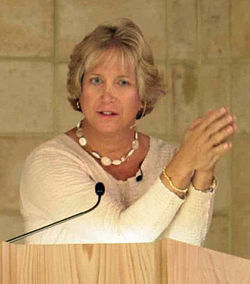This article is written like a personal reflection, personal essay, or argumentative essay that states a Wikipedia editor's personal feelings or presents an original argument about a topic.(May 2015) |
Gender has historically played an important role in public administration. Gender perception and other factors influence the ways in which people think about public administration and bureaucracy. In today's society, public administration remains widely segregated in regard to gender, though it has become commonplace to advocate for greater numbers of equality and non-discrimination policies.
Contents
- Overview
- History of patrimony in Public Administration
- Gender norms and the shaping of Public Administration
- Human capital theory
- The sociopsychological theory
- Benefits of gender diversity in Public Administration
- Marginalized gender identities in Public Administration
- Statistics of marginalized demographics in Public Administration
- International case studies: marginalized gender identities in Public Administration
- Challenges for marginalized gender identities in Public Administration
- Policies for increased gender representation in Public Administration
- Notable figures of marginalized identities in Public Administration
- Mary Anderson
- Susan Stanton
- References
- Further reading




